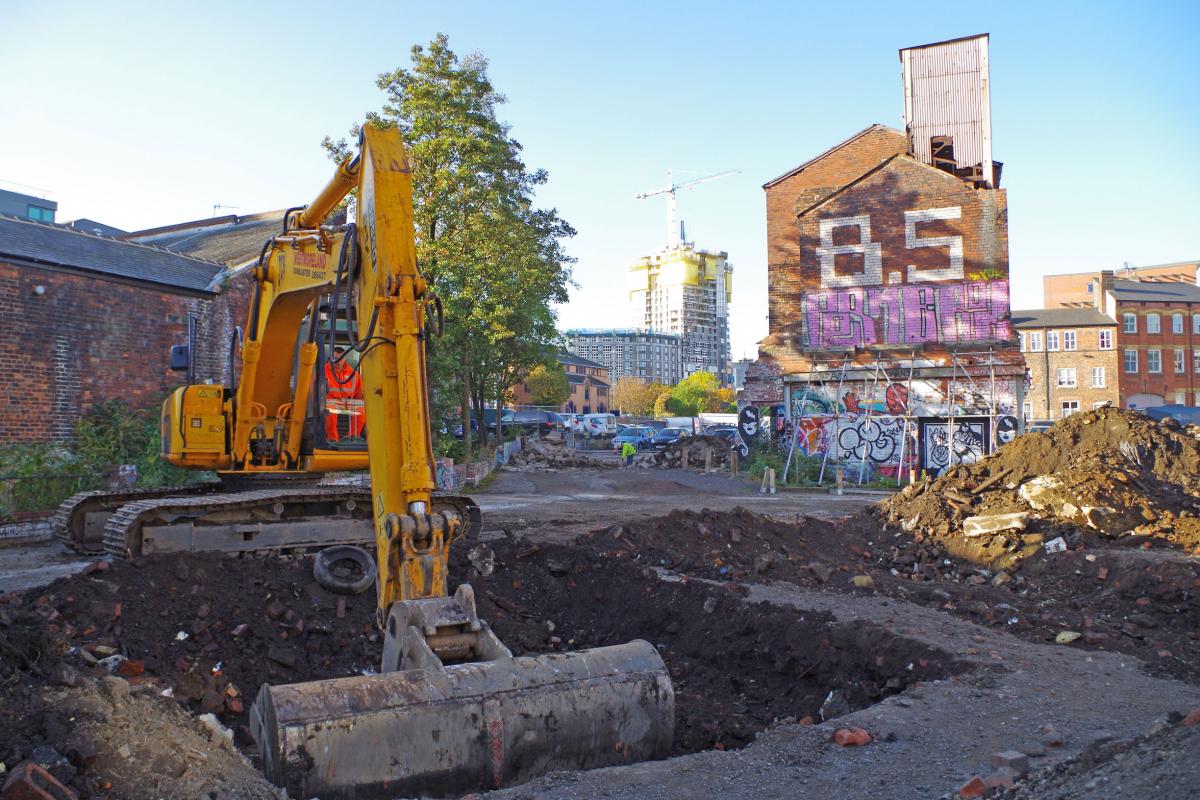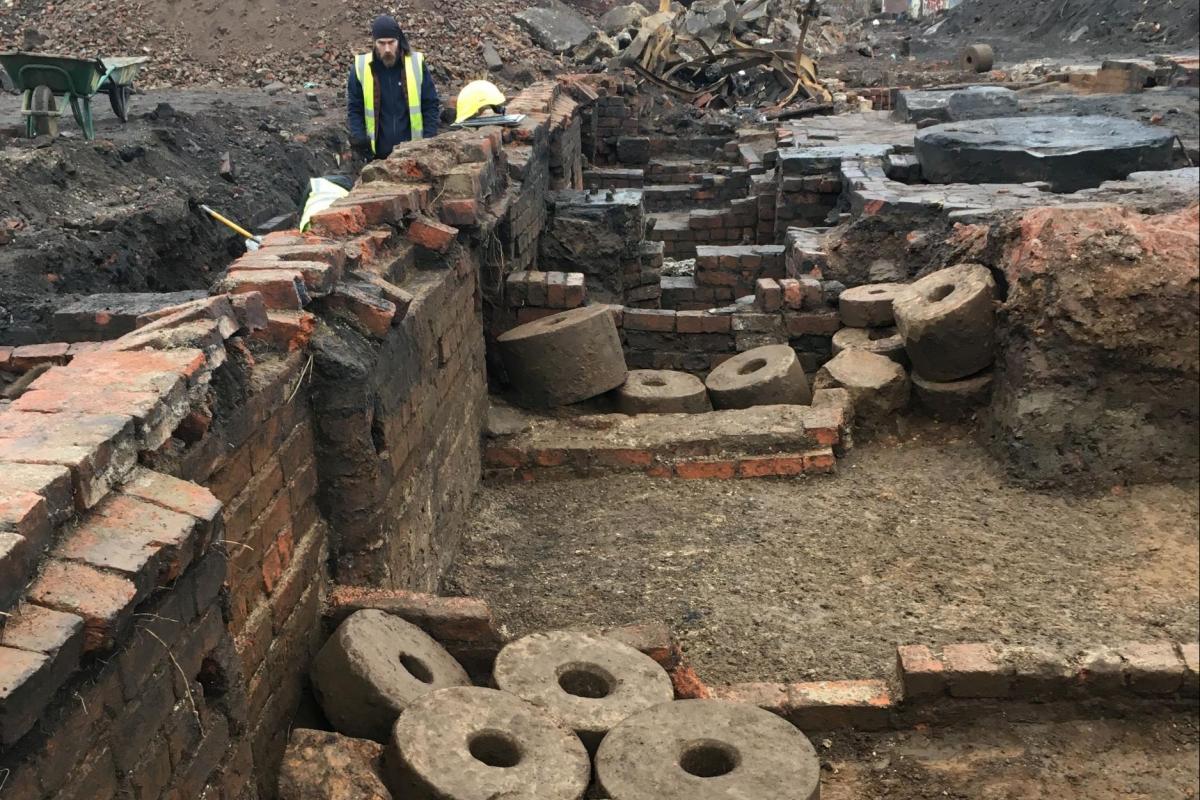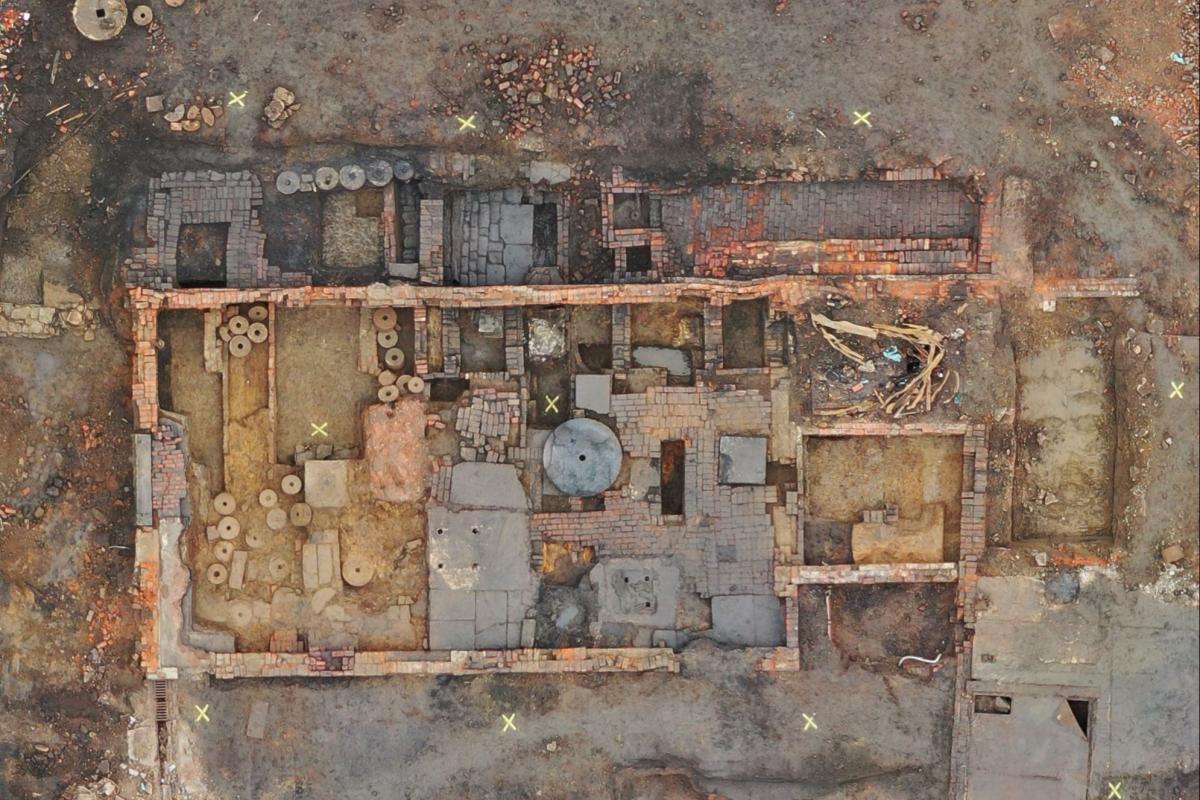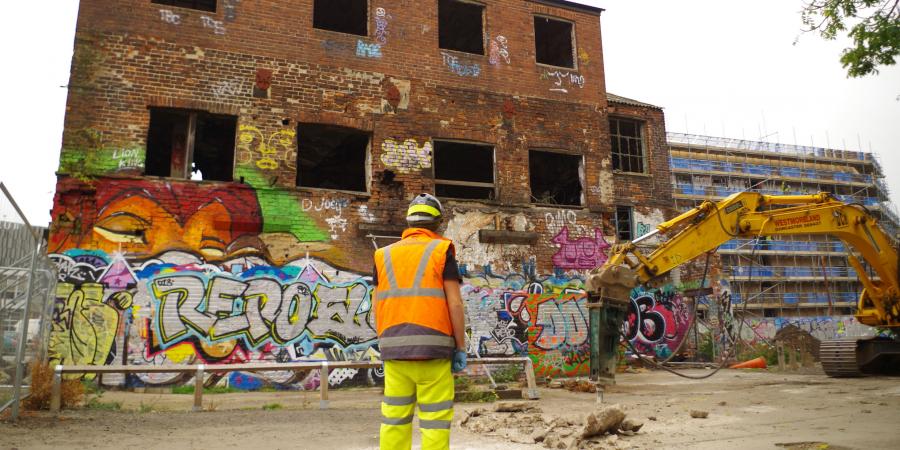Throughout January 2019, Wessex Archaeology’s Sheffield fieldwork team excavated within and around the grinding workshop of the former Porter Island Works in Sheffield city centre. The excavations were carried out for Acreplan Sylvester St. Development Ltd, ahead of planned redevelopment works to create new apartments within Sheffield’s cultural industries quarter.
Following earlier historic building recording of the structure, trenching, excavations around the building and a watching brief during its demolition, Wessex Archaeology spent three weeks investigating the buried internal features of the building. The fieldwork team was led by Emily Eastwood and the project was managed by Richard O'Neill.
Site background
The grinding workshop lay within the Porter valley, which was a renowned centre for the grinding of steel, initially by the 19 watermills using the water’s flow to turn grinding stones.
Later these were replaced by steam mills (like our building) which used steam engines to generate power to turn the stones and later grinding machines.
The mill functioned throughout the 19th century, but by 1905 was described as ‘vacant and ruinous’ on detailed mapping of the city.
The rear of the demolished terraced housing along the street of Sylvester Gardens was seen in an earlier excavation, which revealed floorboards in situ. Also found were two stone walls forming a 3-metre uncapped channel, known as a ‘goit’ in local dialect, and a possible flue was seen to the east.


Industrial features
During the internal investigations, several phases of flooring and industrial features were found, including many bases for heavy grinding machinery and the rare find of a power wheel and belt.
Around 30 grinding stones were found, most were roughly intact but seen in rubble used to level ground, rather than in their original troughs. One, with a six-foot diameter, had been laid flat in the centre of the workshop, with four metal pins added to form a large base of a later grinding machine.
Outside the standing footprint to the north the ‘Boiler shed’ seen on the 1905 map was located and its two phases were investigated. Structures were also found to the south, which may relate to a ‘furnace’ also seen on the 1905 map. Various channels allowed for water management within the site, feeding the boilers and draining cooling and cleansing waters away from the grindstones.
Tools of the trade
A small number of tools, perhaps broken in the sharpening process, were found.
A 19th or early 20th-century moulded ginger beer bottle from a local brewery, John Marples and co. of 2 Market St. Sheffield, was also found. This brewery and pub was bombed in one of the worst tragedies of the Sheffield blitz.

Using technology in recording
Wessex Archaeology's UAV (‘drone’) pilots from the Geophysics team produced a photographic plan of the site to allow better understanding of the structures' spatial relationships, and the excavation allowed the fieldwork team to develop their structural recording skills and their knowledge of our city's impressive industrial past.
The opportunity to investigate a complex industrial site, such as the Porter Island Works, is always a pleasure for the Sheffield team, and we look forward to our next opportunity to ‘sharpen’ the picture of Sheffield’s industrial heritage.
